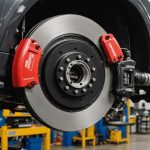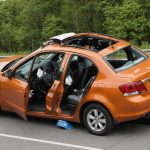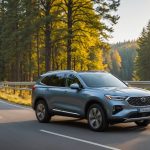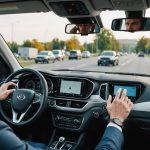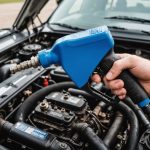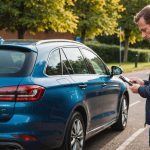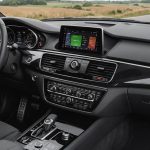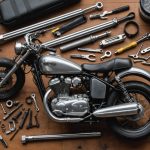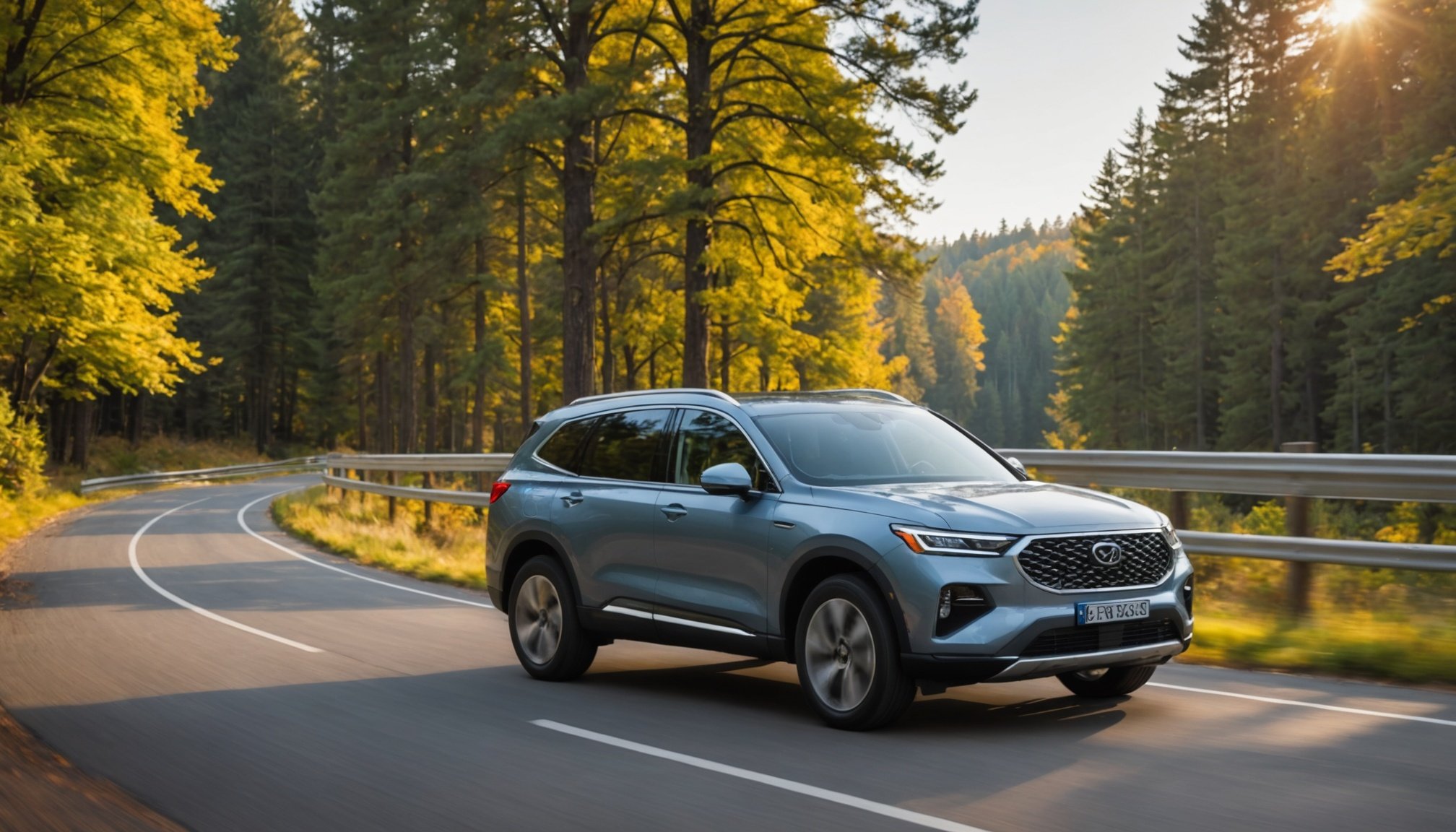When considering a new vehicle, the choice between an SUV and a sedan can often come down to safety features. Understanding the differences in safety technology and structure between these two popular vehicle types is crucial. In this article, we will delve deep into what specific safety features are vital in both SUVs and sedans, ensuring you make an informed decision that aligns with your driving needs and lifestyle.
Understanding Vehicle Structure and Safety Ratings
The structure of a vehicle significantly influences its safety performance. SUVs typically have a higher center of gravity compared to sedans, which can affect their handling and stability during sudden maneuvers. However, this elevated structure often comes with a better crash test rating due to the robust frame and larger crumple zones. Organizations like the National Highway Traffic Safety Administration (NHTSA) and the Insurance Institute for Highway Safety (IIHS) provide safety ratings based on various crash tests, which you should always check before making a purchase.
In the same genre : Essential Safety Guidelines for Navigating a Fully Loaded Minibus: Drive Smart and Stay Safe!
When it comes to insurance, higher-rated vehicles can sometimes lead to lower premiums. For instance, many SUVs are designed with additional safety features that not only protect the passengers but also may reduce the likelihood of accidents. Features such as advanced airbag systems and reinforced structures are more common in SUVs. On the other hand, sedans, while often more fuel-efficient, may lack some of these robust features. That said, many modern sedans come equipped with high-strength steel frames and advanced safety technology such as electronic stability control and traction control, making them competitive in safety performance.
Before deciding on a vehicle, check the safety ratings of the models you are considering. This is an essential step in ensuring that you choose a vehicle that offers the protection needed for you and your passengers.
In the same genre : Essential Safety Measures for Testing and Fine-Tuning High-Performance Brake System Alignment
Essential Safety Features in SUVs
SUVs are often favored for their spacious interiors and elevated driving position, but a primary concern for many buyers is the safety features they offer. One of the most prominent features to look for in an SUV is the presence of advanced driver-assistance systems (ADAS). These systems include technology such as lane departure warning, adaptive cruise control, and automatic emergency braking. These features significantly enhance the safety of any driving situation, particularly in more challenging environments.
Another critical aspect to consider is visibility. Many SUVs come equipped with features such as rearview cameras and blind-spot monitoring systems that help drivers maintain awareness of their surroundings. This is especially valuable given the larger size of an SUV, which can create more blind spots compared to a sedan. Additionally, many modern SUVs also offer features such as surround-view cameras that provide a 360-degree view of the area around the vehicle, enhancing safety during parking and low-speed maneuvers.
In terms of overall space, SUVs generally offer more room for passengers and cargo, which can be a better option for families. More space means more options for safely securing items and ensuring that passengers are comfortable, which is essential for longer trips. Furthermore, many SUV models come equipped with rear-seat reminders to ensure that nothing or no one is left behind, which can be especially useful for families with small children. As you evaluate your options, consider how these features align with your specific needs and driving habits.
Key Safety Features in Sedans
Despite the advantages that SUVs offer, sedans should not be overlooked when it comes to safety. They often provide numerous features that enhance the overall driving experience. For instance, many sedans are equipped with excellent braking systems, which are crucial for avoiding collisions. Look for models that include anti-lock braking systems (ABS) and electronic brake-force distribution, as these can greatly improve your control in emergency braking situations.
In addition to braking systems, you will often find that sedans feature advanced airbag systems that protect occupants in the event of a collision. Some models come with up to ten airbags strategically placed throughout the vehicle, including front, side, and curtain airbags that deploy during a crash to minimize injury. This extensive airbag coverage is an essential aspect of safety that should not be underestimated.
Moreover, the design of a sedan typically allows for lower fuel consumption compared to most SUVs, which can influence the overall cost of ownership, including insurance costs. Sedans tend to have lower insurance premiums due to their smaller size and lower accident rates. For those who prioritize fuel efficiency alongside safety, a sedan may offer a well-rounded option. Ultimately, the choice between an SUV and a sedan involves weighing various features against personal needs and preferences.
Comparing Safety Technology in SUVs and Sedans
When comparing safety technology in SUVs and sedans, both types of vehicles are increasingly equipped with advanced systems designed to enhance driver awareness and avert accidents. However, the application of these technologies can differ significantly. SUVs often leverage their size with features like forward collision warning and pedestrian detection systems, which are designed to alert you to potential hazards ahead. This is particularly useful given the larger blind spots associated with SUVs.
Conversely, while many sedans also offer similar features, they frequently excel in maneuverability, making them agile in urban environments. Furthermore, many sedans are equipped with features like cross-traffic alerts that help when reversing out of parking spaces, a common driving scenario in city settings. This technology is crucial for avoiding collisions in tight spaces and enhances overall driver confidence.
Another important element is the incorporation of smartphone connectivity. Both SUVs and sedans are increasingly equipped with systems that allow for seamless integration with your mobile device. Features like Apple CarPlay and Android Auto enable hands-free communication and navigation, keeping your focus on the road. This connectivity is vital for enhancing driving safety, as it minimizes distractions while operating your vehicle.
As you evaluate different models, consider how each vehicle’s safety technology aligns with your driving habits, particularly in environments where you spend the most time on the road.
The decision between an SUV and a sedan ultimately hinges on your unique preferences and lifestyle needs. Both vehicle types offer a range of safety features that cater to various driving environments. SUVs generally provide a more commanding presence on the road and advanced safety technologies conducive to family travel, while sedans often excel in efficiency and maneuverability.
As you consider your options, prioritize the features that are most important to you. Whether you choose an SUV or a sedan, staying informed about the different safety technologies available will help ensure you select a vehicle that offers the highest level of protection for you and your passengers. By thoroughly researching and understanding the specific safety features of each model, you will be better equipped to make a wise investment in your next car.


